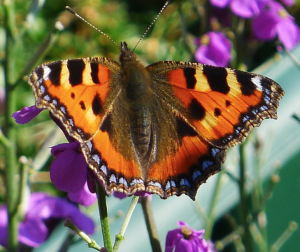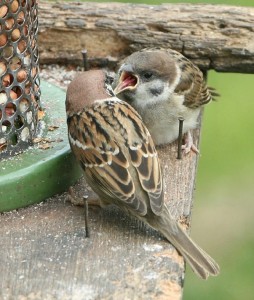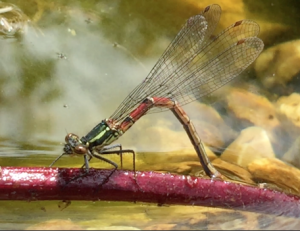My article “Do neonicotinoids affect other wildlife as well as bees? The new DDT?” made me realise that to keep abreast of this mounting evidence that they do affect other non targeted wildlife, I decided to collate science papers and corresponding press articles to allow people who don’t generally have access to the scientific knowledge enabling you to make a more informed choice.
New research “The Environmental Risks of Neonicotinoid pesticides: a review of the evidence post 2013” Thomas Wood and Dave Goulson.
Full abstract here Full paper here This article is a preprint and has not been peer-reviewed but gives you the opportunity to read prior to publication ….. a quick over view…..
The Independent article: Pesticide ban: New evidence shows ‘strong case’ for ban on chemicals linked to birds and bee deaths
Broader risks to environmental health
In addition to work on bees, our scientific understanding has also been improved in the following areas which were not previously considered by EFSA:
- Non-flowering crops treated with neonicotinoids can pose a risk to non-target organisms through increasing mortality in beneficial predator populations.
- Neonicotinoids can persist in agricultural soils for several years, leading to chronic contamination and, in some instances, accumulation over time.
- Neonicotinoids continue to be found in a wide range of different waterways including ditches, puddles, ponds, mountain streams, rivers, temporary wetlands, snowmelt, groundwater and in outflow from water processing plants.
- Reviews of the sensitivity of aquatic organisms to neonicotinoids show that many aquatic insect species are several orders of magnitude more sensitive to these compounds than the traditional model organisms used in regulatory assessments for pesticide use.
- Neonicotinoids have been shown to be present in the pollen, nectar and foliage of non-crop plants adjacent to agricultural fields. This ranges from herbaceous annual weeds to perennial woody vegetation. We would thus expect non-target herbivorous insects and non- bee pollinators inhabiting field margins and hedgerows to be exposed to neonicotinoids. Of particular concern, this includes some plants sown adjacent to agricultural fields specifically for the purposes of pollinator conservation.
- Correlational studies have suggested a negative link between neonicotinoid usage in agricultural areas and population metrics for butterflies, bees and insectivorous birds in three different countries.
Need relevant information to petition?
If you want to write and petition your MPs, MEPs, Local Council, etc., and need some background information you can quote independent researchers. It bring some examples under one roof. Of course there are many more articles. This is just a glimpse and may save you a little time!
For people who like the science written in a more manageable reading style, I have, if possible, included a quality press/news release article!
“All my articles and videos, available free, are funded by my teaching and sales of award winning bumblebee nest boxes, solitary bee boxes, and wormeries. Please help by spreading the word and forwarding this link to your friends and colleagues. https://nurturing-nature.co.uk Thank you” George Pilkington
1. Butterfly decline Press article Independent
2. Decline insectivorous birds press article Bird Guides see explanation video
Simply put, kill insects and you deprive insect eating birds of food e.g. Tree Sparrow, Starling, Swallow
3. Dragonflies/damselflies caddisfly and other aquatic invertebrates press article Guardian
4. Composting worm Eisenia fetida (described as super toxic) press article New Scientist
5. Wildflowers are neonicotinoid reservoirs press article Guardian
6. Fish (reduced food supply) press article Nature World News
7. Lizards (reduced food supply) press article New Scientist
8. Mayflies (highly toxic) news release University of Sussex
9. Earthworms (Lumbricidae) ( live in soil not compost heaps!) press article Independent
10. Predatory beetles (of slugs… decrease in yields…‘For some reason, snail-like mollusks seem to be almost immune to the effects of insecticides’ Rachel Carson) news release The Cornucopia Institute
11. Partridge ( eating seeds) news release University of Sussex
Download the recently published scientific report undertaken by 29 independent scientists from 4 continents which found unequivocal evidence from 800 peer reviewed scientific reports on neonicotinoids, as part of the Task Force on Systemic Pesticides, “World Integrated Assessment”
Titles of science papers in case links disappear!
- Are neonicotinoid insecticides driving declines of widespread butterflies?
- Declines in insectivorous birds are associated with high neonicotinoid concentrations
- Macro-Invertebrate Decline in Surface Water Polluted with Imidacloprid
- Comparative acute toxicity of twenty-four insecticides to earthworm, Eisenia fetida
- Neonicotinoid Residues in Wildflowers, a Potential Route of Chronic Exposure for Bees
- A review of the direct and indirect effects of neonicotinoids and fipronil on vertebrate wildlife
- A review of the direct and indirect effects of neonicotinoids and fipronil on vertebrate wildlife
- Acute and chronic toxicity of neonicotinoids to nymphs of a mayfly species and some notes on seasonal differences
- A review of the direct and indirect effects of neonicotinoids and fipronil on vertebrate wildlife
- Neonicotinoid insecticide travels through a soil food chain, disrupting biological control of non-target pests and decreasing soya bean yield
- An overview of the environmental risks posed by neonicotinoid insecticides




Recent Comments